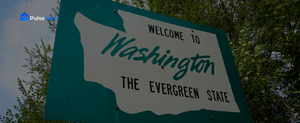ADR Above the Curve: Unveiling Undervalued Destinations for Premium Short-Term Lodging
In the dynamic world of short-term rentals, identifying markets with untapped potential is crucial for maximizing returns. This analysis focuses on Average Daily Rate (ADR) and occupancy rates across various cities, revealing opportunities where ADR significantly exceeds expectations, indicating potential for premium short-term lodging investments.
Understanding ADR and Occupancy
ADR, or Average Daily Rate, represents the average rental income earned for an occupied room in a day. Occupancy rate, on the other hand, indicates the percentage of available rooms that are occupied over a specific period. A high ADR coupled with a healthy occupancy rate suggests strong demand and pricing power in a particular market.
Comparative Analysis of Key Cities
Let's delve into a comparative analysis of several cities, examining their ADR and occupancy rates to identify potential investment hotspots.
Nashville: A Tale of Two Markets
Nashville presents an interesting case study with two distinct markets. In Nashville, AZ, the ADR stands at $263 with an occupancy rate of 70% and an estimated ROI of 12.27%. Contrast this with Nashville, TX, where the ADR is significantly lower at $112, with a slightly lower occupancy rate of 65% and an estimated ROI of 6.54%. This disparity suggests that the Nashville, AZ, market may offer a more lucrative opportunity for short-term rental investors.
Charlotte: High ADR and Occupancy
Charlotte, TN, boasts an impressive ADR of $395, coupled with a high occupancy rate of 87%. This combination results in an estimated ROI of 14.21%. Charlotte's strong performance indicates a robust demand for short-term rentals and a willingness among travelers to pay a premium for lodging.
Raleigh: High ROI Despite Moderate ADR
Raleigh, NC, presents a different scenario. While its ADR of $184 is lower than Charlotte's, its occupancy rate of 78% contributes to an exceptionally high estimated ROI of 19.84%. This suggests that Raleigh may offer a more affordable entry point for investors while still delivering substantial returns.
Portland: Strong Occupancy Drives Returns
Portland, FL, showcases a solid ADR of $207 and a high occupancy rate of 86%, resulting in an estimated ROI of 15.01%. Portland's strong occupancy rate indicates consistent demand for short-term rentals, making it an attractive market for investors.
Austin: Occupancy vs. ADR
Austin, WA, has an ADR of $125 and an occupancy rate of 83%, leading to an estimated ROI of 7.96%. When compared to other cities, Austin's lower ADR suggests that while occupancy is strong, there might be room to optimize pricing strategies to increase revenue.
Phoenix: Balanced Performance
Phoenix, CO, demonstrates a balanced performance with an ADR of $153 and an occupancy rate of 85%, resulting in an estimated ROI of 11.91%. Phoenix's consistent performance makes it a stable market for short-term rental investments.
Tampa: Varied Performance Across States
Tampa also presents varied performance depending on the state. Tampa, WA, has an ADR of $262 and an occupancy rate of 63%, resulting in an estimated ROI of 10.31%. In contrast, Tampa, FL, has a lower ADR of $175 with a higher occupancy rate of 67%, leading to an estimated ROI of 10.36%. The Tampa, WA, market shows potential for growth if occupancy rates can be improved.
Miami: High Occupancy, Moderate ROI
Miami, OR, boasts a high occupancy rate of 85% but a moderate ADR of $247, resulting in an estimated ROI of 5.88%. Miami's high occupancy suggests strong demand, but the lower ROI indicates that pricing strategies may need to be reevaluated to maximize profitability.
Seattle: High ADR and ROI
Seattle, FL, stands out with a high ADR of $372 and an occupancy rate of 80%, leading to an impressive estimated ROI of 17.18%. Seattle's strong performance makes it a highly attractive market for short-term rental investments.
Factors Driving High ADR
Several factors can contribute to a high ADR in a particular market:
- Location: Proximity to popular attractions, business districts, and transportation hubs can command higher rental rates.
- Property Type: Unique or luxury properties often fetch higher ADRs compared to standard accommodations.
- Amenities: Properties with desirable amenities such as swimming pools, gyms, and high-speed internet can justify higher rental rates.
- Seasonality: Seasonal events and tourism peaks can drive up demand and ADRs.
- Market Demand: Overall demand for short-term rentals in a particular market plays a significant role in determining ADR.
Identifying Undervalued Destinations
To identify undervalued destinations, investors should focus on markets where ADR is significantly higher than expected, given the local market conditions and property characteristics. This may involve analyzing historical data, comparing ADRs to similar properties in the area, and assessing the potential for future growth.
Investment Strategies for Premium Returns
Once an undervalued destination has been identified, investors can employ various strategies to maximize returns:
- Property Upgrades: Investing in property upgrades and renovations can enhance the appeal of the property and justify higher rental rates.
- Dynamic Pricing: Implementing dynamic pricing strategies can help optimize ADR based on real-time demand and market conditions.
- Targeted Marketing: Focusing marketing efforts on attracting high-value travelers can increase occupancy rates and ADR.
- Exceptional Guest Service: Providing exceptional guest service can lead to positive reviews and repeat bookings, driving up demand and ADR.
Conclusion
Identifying undervalued destinations with high ADR potential requires a thorough understanding of market dynamics and a data-driven approach. By carefully analyzing ADR and occupancy rates, investors can pinpoint opportunities for premium short-term lodging investments and maximize their returns. Cities like Charlotte, TN, with an ADR of $395 and Seattle, FL, with an ADR of $372, demonstrate the potential for high returns in the short-term rental market. However, markets like Raleigh, NC, with an estimated ROI of 19.84%, show that high returns can be achieved even with a moderate ADR by focusing on occupancy and efficient management. By focusing on these key metrics and implementing effective investment strategies, investors can unlock the full potential of the short-term rental market.



